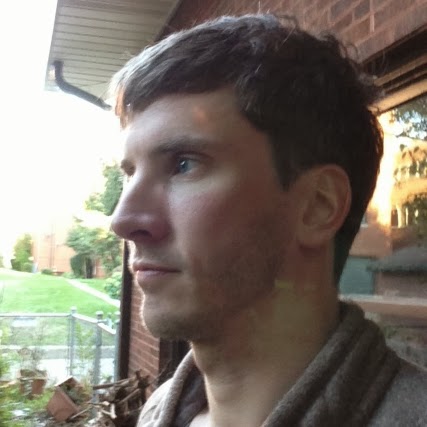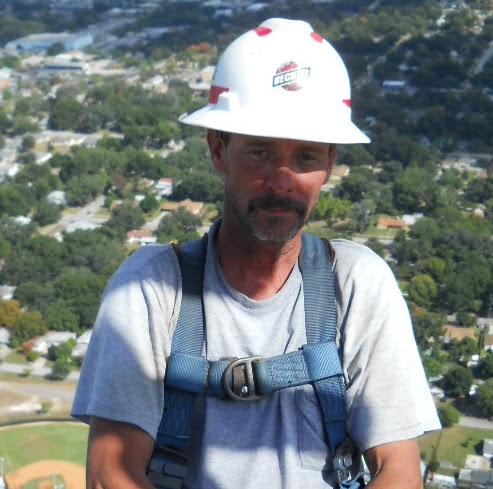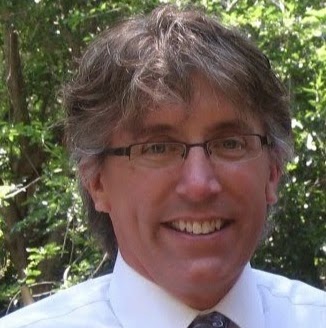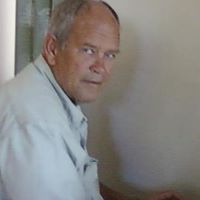William L Guthrie
age ~37
from Albany, NY
- Also known as:
-
- William J Guthrie
- Bill L Guthrie
- Brandon Guthrie
William Guthrie Phones & Addresses
- Albany, NY
- Latham, NY
- Kingston, NY
Education
-
School / High School:University of Florida, Fredric G. Levin College of Law
Ranks
-
Licence:Florida - Member in Good Standing
-
Date:1994
Us Patents
-
Method Of Chemical-Mechanical Polishing An Electronic Component Substrate And Polishing Slurry Therefor
view source -
US Patent:49541420, Sep 4, 1990
-
Filed:Mar 7, 1989
-
Appl. No.:7/285435
-
Inventors:Jeffrey W. Carr - Fishkill NY
Lawrence D. David - Wappingers Falls NY
William L. Guthrie - Hopewell Junction NY
Frank B. Kaufman - Amawalk NY
William J. Patrick - Newburgh NY
Kenneth P. Rodbell - Poughkeepsie NY
Robert W. Pasco - Wappingers Falls NY
Anton Nenadic - Red Hook NY -
Assignee:International Business Machines Corporation - Armonk NY
-
International Classification:C09C 168
-
US Classification:51309
-
Abstract:Disclosed is a method of chem-mech polishing an electronic component substrate. The method includes the following steps; obtaining a substrate having at least two features thereon or therein which have a different etch rate with respect to a particular etchant; and contacting the substrate with a polishing pad while contacting the substrate with a slurry containing the etchant wherein the slurry includes abrasive particles, a transition metal chelated salt and a solvent for the salt. The chem-mech polishing causes the at least two features to be substantially coplanar. Also disclosed is the chem-mech polishing slurry.
-
Method Of Forming Fine Conductive Lines, Patterns And Connectors
view source -
US Patent:47027924, Oct 27, 1987
-
Filed:Oct 28, 1985
-
Appl. No.:6/791862
-
Inventors:William L. Guthrie - Hopewell Junction NY
Frank B. Kaufman - Amawalk NY -
Assignee:International Business Machines Corporation - Armonk NY
-
International Classification:C23F 100
H05K 326
H01L 7184 -
US Classification:156628
-
Abstract:The present invention discloses a method of forming fine conductive lines, patterns, and connectors, and is particularly useful in the formation of electronic devices. The method comprises a series of steps in which: a polymeric material is applied to a substrate; the polymeric material is patterned to form openings through, spaces within, or combinations thereof in the polymeric material; subsequently, conductive material is applied to the patterned polymeric material, so that it at least fills the openings and spaces existing in the polymeric material; and excess conductive material is removed from the exterior major surface of the polymeric material using chemical-mechanical polishing, to expose at least the exterior major surface of the polymeric material. The structure remaining has a planar exterior surface, wherein the conductive material filling the openings and spaces in the patterned polymeric material becomes features such as fine lines, patterns, and connectors which are surrounded by the polymeric material. The polymeric material may be left in place as an insulator or removed, leaving the conductive features on the substrate.
-
Method For Producing Coplanar Multi-Level Metal/Insulator Films On A Substrate And For Forming Patterned Conductive Lines Simultaneously With Stud Vias
view source -
US Patent:47896485, Dec 6, 1988
-
Filed:Oct 28, 1985
-
Appl. No.:6/791887
-
Inventors:Melanie M. Chow - Poughquag NY
John E. Cronin - Milton VT
William L. Guthrie - Hopewell Junction NY
Carter W. Kaanta - Essex Junction VT
Barbara Luther - Devon PA
William J. Patrick - Newburgh NY
Kathleen A. Perry - Lagrangeville NY
Charles L. Standley - Wappingers Falls NY -
Assignee:International Business Machines Corporation - Armonk NY
-
International Classification:H01L 21304
H01L 21306 -
US Classification:437225
-
Abstract:Patterned conductive lines are formed simultaneously with stud via connections through an insulation layer to previously formed underlying patterned conductive lines in multilevel VLSI chip technology. A first planarized layer of insulation is deposited over a first level of patterned conductive material to which contacts are to be selectively established. The first layer then is covered by an etch stop material. Contact holes are defined in the etch stop material at locations where stud connectors are required. The first layer of insulation is not etched at this time. Next, a second planarized layer of insulation, is deposited over the etch stop material. The second layer insulation, in turn, is etched by photolithography down to the etch stop material to define desired wiring channels, some of which will be in alignment with the previously formed contact holes in the etch stop material. In those locations where the contact holes are exposed, the etching is continued into the first layer of insulation to uncover the underlying first level of patterned conductive material. The channels and via holes are overfilled with metallization.
-
Chem-Mech Polishing Method For Producing Coplanar Metal/Insulator Films On A Substrate
view source -
US Patent:49448366, Jul 31, 1990
-
Filed:Oct 28, 1985
-
Appl. No.:6/791860
-
Inventors:Klaus D. Beyer - Poughkeepsie NY
William L. Guthrie - Poughkeepsie NY
Stanley R. Makarewicz - New Windsor NY
Eric Mendel - Poughkeepsie NY
William J. Patrick - Newburgh NY
Kathleen A. Perry - Lagrangeville NY
William A. Pliskin - Poughkeepsie NY
Jacob Riseman - Poughkeepsie NY
Paul M. Schaible - Poughkeepsie NY
Charles L. Standley - Wappingers Falls NY -
Assignee:International Business Machines Corporation - Armonk NY
-
International Classification:H01L 21304
H01L 21306 -
US Classification:156645
-
Abstract:A method is disclosed for producing coplanar metal/insulator films on a substrate according to a chem-mech polishing technique. In one example, a substrate having a patterned insulating layer of dielectric material thereon, is coated with a layer of metal. The substrate is then placed in a parallel polisher and the metal is removed elsewhere except in the holes where it is left intact. This is made possible through the use of an improved selective slurry which removes the metal much faster than the dielectric material. The insulating layer may then be used as an automatic etch stop barrier. In a second example a substrate having a patterned metallic layer is coated with an insulating layer and then subjected to chem-mech polishing. The structure is coplanarized by the chem-mech removal of the insulating material from the high points of the structure at a faster rate than from the lower points. Optional etch stop layers also may be used.
-
Laser Planarization Of Zone 1 Deposited Metal Films For Submicron Metal Interconnects
view source -
US Patent:56331959, May 27, 1997
-
Filed:Sep 22, 1995
-
Appl. No.:8/532376
-
Inventors:William L. Guthrie - Hopewell Junction NY
Naftali E. Lustig - Croton on Hudson NY -
Assignee:International Business Machines, Corp. - Hopewell Junction NY
-
International Classification:H01L 2126
-
US Classification:438662
-
Abstract:A method of laser planarizing metallic thin films minimizes the laser fluences required to melt or nearly melt the metalization. This is accomplished by reducing the optical reflectivity of the metallic lines and vias by using textured thin films. This reduction of optical reflectivity, in turn, reduces the minimum fluence needed to melt or nearly melt the metal using a laser, thus improving the process window and minimizing the damage to the surrounding media.
Medicine Doctors

William S. Guthrie
view sourceSpecialties:
Internal Medicine
Work:
Medical Clinic Of North Texas
6100 Harris Pkwy STE 345, Fort Worth, TX 76132
8173465960 (phone), 8173465961 (fax)
6100 Harris Pkwy STE 345, Fort Worth, TX 76132
8173465960 (phone), 8173465961 (fax)
Education:
Medical School
University of Texas Southwestern Medical Center at Dallas
Graduated: 1994
University of Texas Southwestern Medical Center at Dallas
Graduated: 1994
Procedures:
Arthrocentesis
Continuous EKG
Destruction of Benign/Premalignant Skin Lesions
Electrocardiogram (EKG or ECG)
Nutrition Therapy
Skin Tags Removal
Vaccine Administration
Continuous EKG
Destruction of Benign/Premalignant Skin Lesions
Electrocardiogram (EKG or ECG)
Nutrition Therapy
Skin Tags Removal
Vaccine Administration
Conditions:
Acute Bronchitis
Acute Sinusitis
Atrial Fibrillation and Atrial Flutter
Benign Paroxysmal Positional Vertigo
Benign Prostatic Hypertrophy
Acute Sinusitis
Atrial Fibrillation and Atrial Flutter
Benign Paroxysmal Positional Vertigo
Benign Prostatic Hypertrophy
Languages:
English
Description:
Dr. Guthrie graduated from the University of Texas Southwestern Medical Center at Dallas in 1994. He works in Fort Worth, TX and specializes in Internal Medicine. Dr. Guthrie is affiliated with USMD Hospital At Fort Worth.
Wikipedia References

William Guthrie (Boxer)
Resumes

Lead Officer
view sourceLocation:
Albany, NY
Industry:
Government Administration
Work:
Tsa
Lead Officer
Lead Officer
Education:
University at Albany, Suny 2006 - 2011
Bachelors, Bachelor of Arts, Criminal Justice, Sociology Hudson Valley Community College 2007 - 2009
Associates, Criminal Justice
Bachelors, Bachelor of Arts, Criminal Justice, Sociology Hudson Valley Community College 2007 - 2009
Associates, Criminal Justice

William Guthrie
view source
William Guthrie
view source
William Guthrie
view source
William Guthrie
view source
William Guthrie
view sourceIsbn (Books And Publications)

Battles of the Thirty Years War: From White Mountain to Nordlingen, 1618-1635
view sourceAuthor
William P. Guthrie
ISBN #
0313320284

The Later Thirty Years War: From the Battle of Wittstock to the Treaty of Westphalia
view sourceAuthor
William P. Guthrie
ISBN #
0313324085


Knowing Good Schools: A Guide to Rating Public High Schools
view sourceAuthor
William D. Guthrie
ISBN #
0897897390




Name / Title
Company / Classification
Phones & Addresses
Incorporator
GUTHRIE HOSPITAL, INC
Lawyers & Attorneys

William Charles Guthrie - Lawyer
view sourceAddress:
Foley & Lardner LLP
4072443260 (Office)
4072443260 (Office)
Licenses:
Florida - Member in Good Standing 1994
Education:
University of Florida, Fredric G. Levin College of Law
Graduated - 1994
Graduated - 1994
Specialties:
Business - 33%
Real Estate - 33%
Unknown - 34%
Real Estate - 33%
Unknown - 34%
License Records
William C Guthrie
License #:
32889 - Expired
Category:
Dual Towing Operator(IM)/VSF Employee
Expiration Date:
Nov 10, 2015
Youtube
Myspace
Classmates

William Guthrie
view sourceSchools:
North Delta Secondary High School Delta Saudi Arabia 1964-1968
Community:
Mike Hardwick, Mary Bowyer, Connie Dion

William Guthrie
view sourceSchools:
Ross Sheppard High School Edmonton Azores 1962-1966
Community:
Stu Guthrie, Pat Weidenhamer, Paula Marvin, Laurie Cote

William Guthrie
view sourceSchools:
Gorham-Fayette High School Fayette OH 1980-1988
Community:
Lyn Liechty

William Guthrie
view sourceSchools:
Phoenix Union High School Phoenix AZ 1952-1956
Community:
George Hernandez, Charles Carrasco

William Guthrie
view sourceSchools:
John Oliver Senior Secondary School Vancouver Saudi Arabia 1980-1984
Community:
Ernie Patterson, Bev Taylor

William Guthrie (William ...
view sourceSchools:
Asbury College Wilmore KY 1955-1959
Community:
Kirstie Hague, David Ditto

William Guthrie
view sourceSchools:
Joppatowne High School Joppatowne MD 1973-1977
Community:
Santa Panian, Jackie May

William Guthrie
view sourceSchools:
Kingsbury Colony Elementary School Valier MT 1980-1984, Valier Elementary School Valier MT 1980-1984, Valier High School Valier MT 1985-1989
Community:
Wayne Sand
News

Friend or foe: blue on green killings in Afghanistan
view source- The catafalque party stands guard around Lance Corporal Andrew Joness coffin during his funeral in Melbourne. LCPL Jones was killed in a blue on green attack in May 2011. AAP/Australian Department of Defence, SGT William Guthrie
- Date: Aug 30, 2012
- Source: Google
Flickr
Googleplus

William Guthrie
Work:
A-T-Kar-nee - Corporate Counsel (2012)
DLA Piper - Associate (2009-2012)
DLA Piper - Associate (2009-2012)
Education:
Colby College - Philosophy
Tagline:
You know it!

William Guthrie
Work:
Bechtel construction - Tower tech (2000)

William Guthrie

William Guthrie

William Guthrie (Thehater...

William Guthrie

William Guthrie

William Guthrie

RivaSideWyteboy William G...
view source
William L Guthrie
view source
William Eddie Guthrie
view source
Hamilt William Guthrie
view source
William Paul Guthrie
view source
Tom William Guthrie
view source
William E Guthrie Jr
view source
William Arthur Guthrie
view sourceGet Report for William L Guthrie from Albany, NY, age ~37















